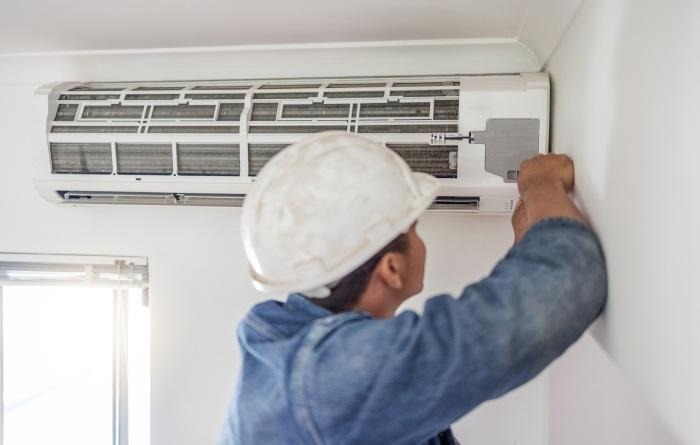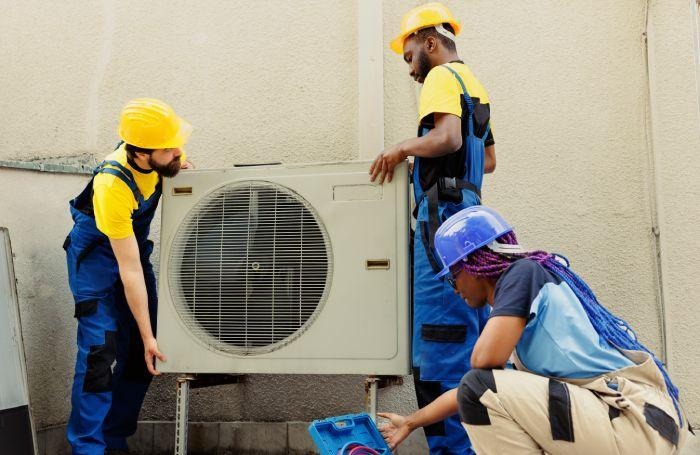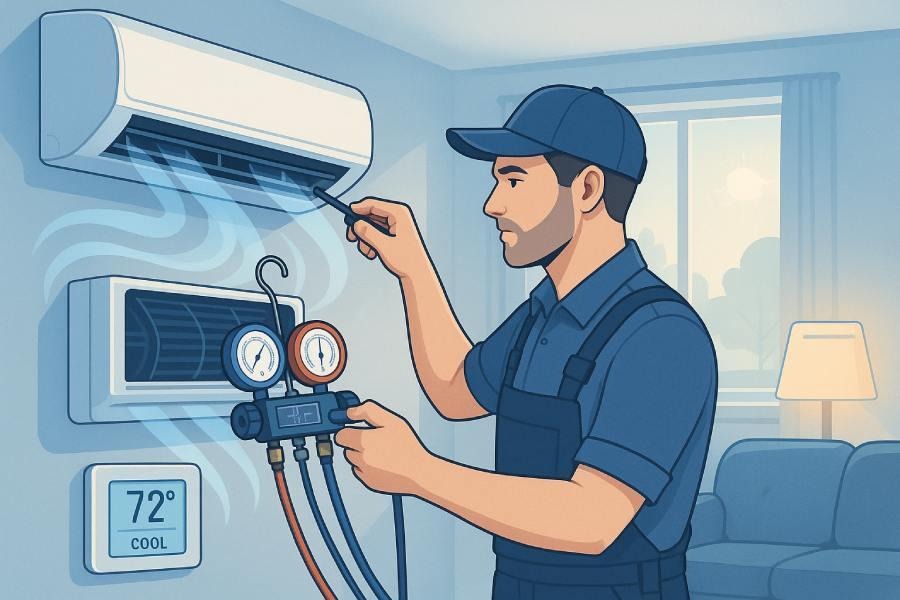A well-functioning air conditioning unit is essential for indoor climate control, especially during the hot summer months. Proper HVAC operation ensures your home remains cool, comfortable, and energy-efficient throughout the year. However, like any complex system, cooling systems can experience issues requiring timely repair.
This article provides essential insights into Air Conditioner Repair, highlighting the most common signs your unit may need professional attention, practical DIY troubleshooting tips, and the importance of routine AC maintenance. It also guides you on how to choose the right repair service and outlines preventative measures to help you avoid future breakdowns. Whether you own a central air conditioning system, a split system air conditioner, or a portable AC unit, understanding these aspects of Air Conditioner Repair will help ensure long-lasting performance, energy efficiency, and superior indoor air quality.
Common Signs Your Air Conditioner Needs Repair
Recognizing early symptoms of a malfunctioning cooling system can prevent costly repairs and lengthy discomfort. Typical signs indicating your air conditioning unit requires repair include:
- Insufficient Cooling or Warm Air: When the compressor or refrigerant levels are compromised, your AC may fail to produce cool air. This is common in both central air conditioning and heat pump setups.
- Unusual Noises: Grinding, squealing, or banging sounds often point to electrical issues, fan motor replacement needs, or mechanical failures.
- Increased Energy Bills: A sudden spike in utility costs may signal energy efficiency loss due to clogged filters, ductwork leaks, or faulty thermostats.
- Water Leaks or Excess Moisture: Condensation issues involving the evaporator coil or drain line can cause water pooling around the system, indicating the need for drain line cleaning or leak detection.
- Poor Airflow: Airflow problems arise from blocked ductwork, dirty filters, or malfunctioning fans, hampering adequate indoor climate control.
- Thermostat Malfunction: Improper thermostat calibration affects system cycling, resulting in uneven cooling or constant running.
- Frequent Cycling: The system turning on and off too often may indicate electrical issues, refrigerant leaks, or compressor troubles.
Understanding these warning signs is the first step toward timely cooling repair services and avoiding emergency AC repair scenarios.

DIY Troubleshooting Tips Before Calling a Professional
Before reaching out to commercial HVAC repair experts or residential AC repair technicians, homeowners can perform basic cooling system troubleshooting to identify simple issues:
- Check and Replace Air Filters: Dirty filters restrict airflow and reduce energy efficiency. For optimal performance, filter replacement should be part of routine AC maintenance.
- Inspect Thermostat Settings: Ensure your thermostat is set to cooling mode and the temperature is appropriately calibrated. Some systems benefit from zoning systems to control temperature by room.
- Clean the Outdoor Condenser Coil: Dirt and debris on the condenser coil impair heat exchange, so gently cleaning it can improve cooling capacity.
- Clear the Drain Line: Blocked drain lines cause water buildup and potential damage. Use a wet-dry vacuum or flush with vinegar solution to maintain clear drainage.
- Reset the Circuit Breaker: A tripped breaker can cut power to your air conditioning unit. Resetting it might resolve the issue.
- Examine Ductwork: Sealing visible gaps can improve airflow and air quality inside the home.
- Test Portable AC Units: For portable units, ensure proper ventilation and regular water drainage from the dehumidifier function.
When these steps do not resolve the problem, contact licensed professionals like those certified in brands from Carrier, Trane, Lennox International, or Goodman Manufacturing for advanced AC diagnostics and repair.

Choosing the Right Repair Service: What to Look For
Selecting a reputable cooling repair service ensures your air conditioner receives expert care, whether for residential AC repair or commercial HVAC repair. Consider these factors when choosing a provider:
- Certification and Experience: Look for technicians certified in handling systems by Mitsubishi Electric, Goodman Manufacturing, or Carrier, with demonstrated expertise in split system air conditioner and central air conditioning repairs.
- Comprehensive Services: Prefer companies offering full-service AC installation, diagnostics, filter replacement, fan motor replacement, and drain line cleaning.
- Reliable Emergency AC Repair: Availability of 24/7 emergency services ensures prompt attention during system failures.
- Customer Reviews and References: Positive feedback from previous customers speaks volumes about professionalism and service quality.
- Energy Efficiency Focus: Services emphasizing energy-saving solutions and indoor air quality improvements reveal a commitment to long-term value.
- Transparent Pricing: Clear estimates and no hidden fees build trust.
- Warranty and Guarantees: Providers offering warranties on parts and labor protect your investment.
Experienced service providers are equipped to troubleshoot complex cooling system issues involving thermostat calibration, refrigerant recharging, and electrical repairs, delivering peace of mind alongside superior performance.

